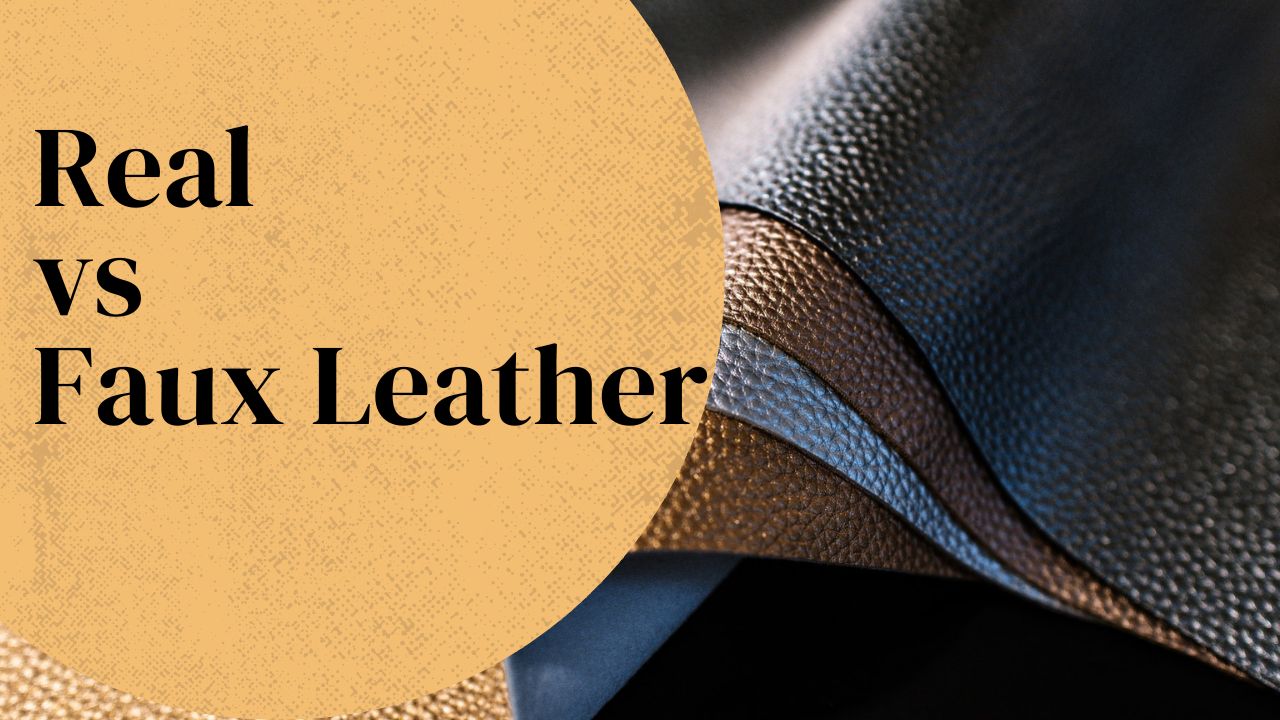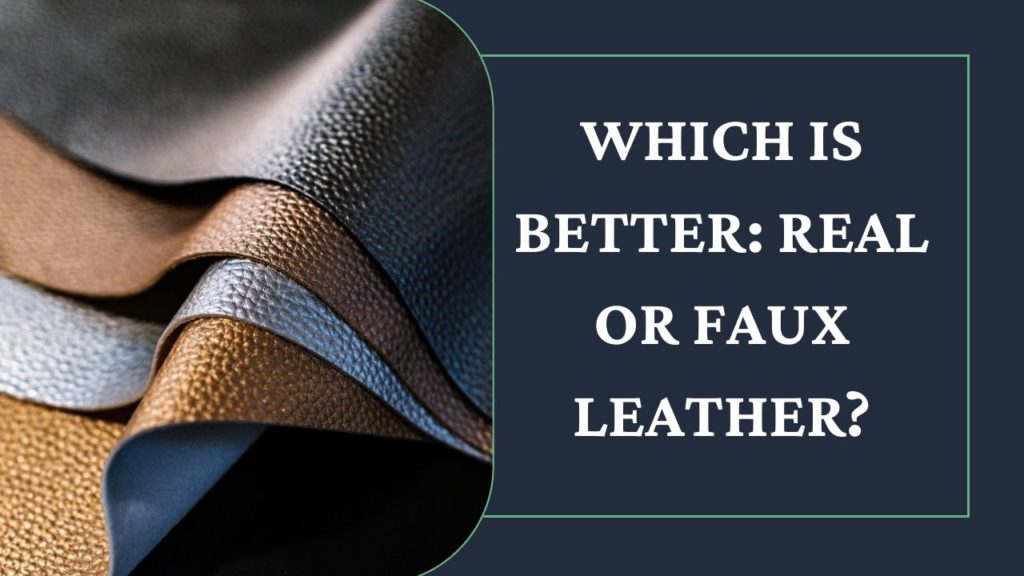How To Differentiate Real And Faux Leather?

Leather can be a luxurious possession, as it should be. No other material exudes regality or sophistication as leather does. So, while choosing to add leather to your business’s product line, it is important that you go for the real thing, so that it is long-lasting and worth your money.
There are multiple ways to differentiate between real and faux leather. One of the major distinctions is the texture of each. Even the smell plays a huge factor.
Of course, there is a lot more detail to it. So, in this article, to help you make the correct choice, we are going to thoroughly mention how to differentiate between real leather and faux leather. We have also included some additional details to further assist you. We would recommend reading the whole article so that you can make the best decisions for your wardrobe.
Table of Contents
How Can You Differentiate Between Real And Faux Leather?
Before we explain how to differentiate between real and faux leather, it is essential that you know how each material is actually sourced. This will help you differentiate between them.
Real leather items are made from the skins or hides of animals such as cows, buffaloes, etc. Some exotic materials are also sourced from snakes or alligators. In order to prevent the material from decaying, a tanning or chemical treatment is applied.
Faux leather starts off with a synthetic base, such as polyester. It is then further processed with the use of polyurethane, wax, etc. to replicate the texture of real leather.
We have already mentioned some main differences above but let us dive into the details of those. Below, we have also included some additional differences so that it is easier for you to understand which is real leather and which is not.
Check The Pores
If the pores on your leather product are consistent and repetitive, that is faux leather. Real leather products have pores that are imperfect and inconsistent. This is because they are natural.
Look Into The Edges
If the edges of your leather bags are rough, they are made of real leather. Natural things can be imperfect. If they have a smooth, polished finish, they are faux leather. Those usually have a plastic feel to them.
Smell The Product
You can simply take a strong whiff of your leather product to check its authenticity. Real leather items have a rich and distinctive smell to them. Acquaint yourself with a lot of real leather products and you will be able to differentiate them from the faux ones easily just by smelling them.
Feel The texture
If your leather products feel way too smooth, chances are they are faux leather. Real leather can be smooth, but not that much. It mostly has an unrefined texture, which is what makes it so unique.
In case you want a demonstration, you can take a look here.
Which Is Better: Real Or Faux Leather?

At the end of the day, it is up to you to decide whether you want to add a piece of real leather to your apparel or the fake ones that are cheaper. However, real leather does have its perks, and it is an iconic part of the fashion industry for a reason. Below, I have mentioned some of the major reasons why real leather is a better option than faux leather.
More durable
If properly taken care of, real leather can last for decades. As it originates from the skin of animals, the material of real leather does not weaken easily. Whereas, faux leather is more prone to damage and wear and tear. As a result, you will have to replace them on a regular basis which ends up costing more money.
When you look at the cost from this perspective, real leather items might seem like an unnecessary luxury because of their expensive price tags yet your purchase will be justified in the long run as the product is worth the value for money, and you can use them over and over again.
The value of buying just one real leather product is almost equal to the value of buying and replacing multiple faux leather items over the years. So, we would say that investing in real leather seems like a more reasonable option.
Better Quality As Time Passes
Real leather originates from animal skin, every aspect of which includes stretch marks, veins, etc. As a consequence, with more usage, products made from real leather appear better as well. Plus, these products develop a patina, which is a soft sheen that makes the product look more refined.
As mentioned, faux leather needs to be replaced frequently, and hence, they also do not develop a patina. If you inspect the pores of faux leather items and compare them with real leather products, you will see that the initial ones will have an artificial look as an aftermath of being made from synthetic materials.
Less Wastage
One of the main reasons people opt for faux leather instead of real leather is because of the animal cruelty associated with the latter, But think of it this way, animal cruelty will not cease to exist as long as the meat industry is there.
As a result, there is some sort of benefit to making proper use of the whole animal. Based on this perspective, real leather caters to products that are by-products of the meat industry. After the real purpose of the animals has been achieved (their meat), their skin is made use of too, so that absolutely nothing is wasted.
More Popular And Regal
In the world of fashion, real leather has been an icon for ages now. It is basically royalty now. The smell, texture, and feel of it are unmatched. Even the irregular pores and imperfect marks all over them offer a distinctive quality to them. This is why people spend tons of money on them without batting an eye.
Despite faux leather making significant progress in impersonating real leather, it still is not the real thing. Faux leather does not even smell anywhere close to the richness that is real leather. Because of the materials used in the production of faux leather, they end up smelling of chemicals.
Conclusion
After reading this article, you should know how to differentiate between real and faux leather. In turn, we hope you know what to get to elevate your apparel accessories business. If you are looking to add some unique bags and leather goods to your product line, we will be happy to assist you. Wishing you a lovely day ahead!
